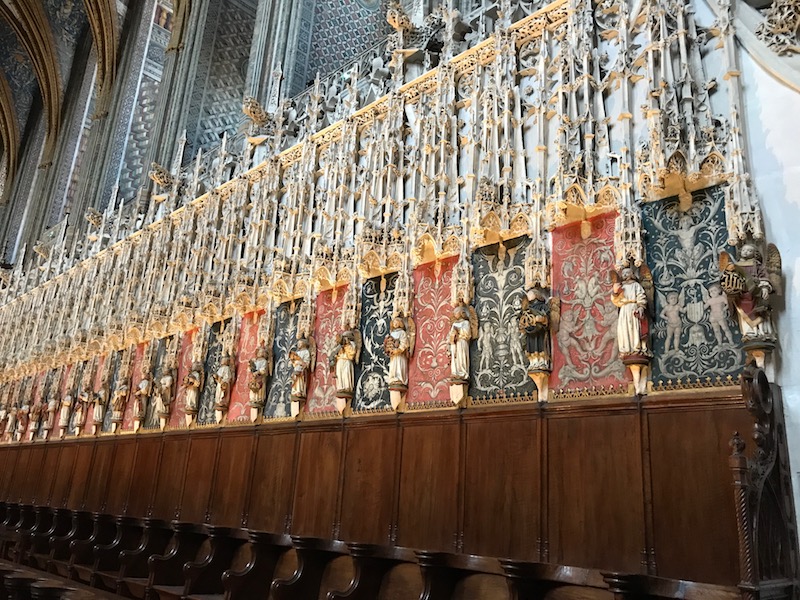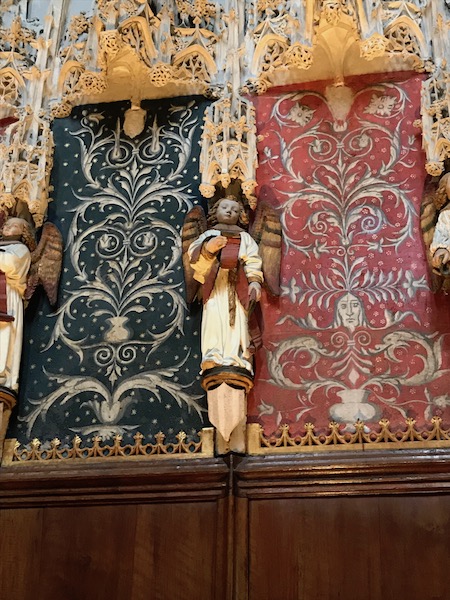Our Blog - Albi: The Cathedral of Saint-Cecile
The Cathedral Basilica of Saint-Cecilia, also known as the Albi Cathedral, is the main attraction in the town. The first church here was built in the 4th century but was destroyed by fire (go figure). Additional church buildings followed, up to this brick Gothic cathedral, which was constructed between 1287 and 1480. After the Cathar Crusade, the Catholic Bishop in Albi decided to build a dominant, fortress-like cathedral to convey the power and authority of the Roman Catholic Church.
As you can see from these exterior pictures, he succeeded. It is an imposing, dominating fortress in the middle of a large square. We tried to get pictures from different angles, and you'll see additional ones in other pages from the other side of the river. It is built in the Southern Gothic style out of red brick. Compared with regular Gothic, the buttresses are almost entirely submerged in the mass of the church. Traditionally, the entry is on the West side, but here, the main entry is on the south side through an elaborate doorway that was added in 1392. A 256 foot tall bell tower was added in 1492. Along the roofline on all sides of the cathedral are white stone gargoyles, which were added during 19th-century restorations.
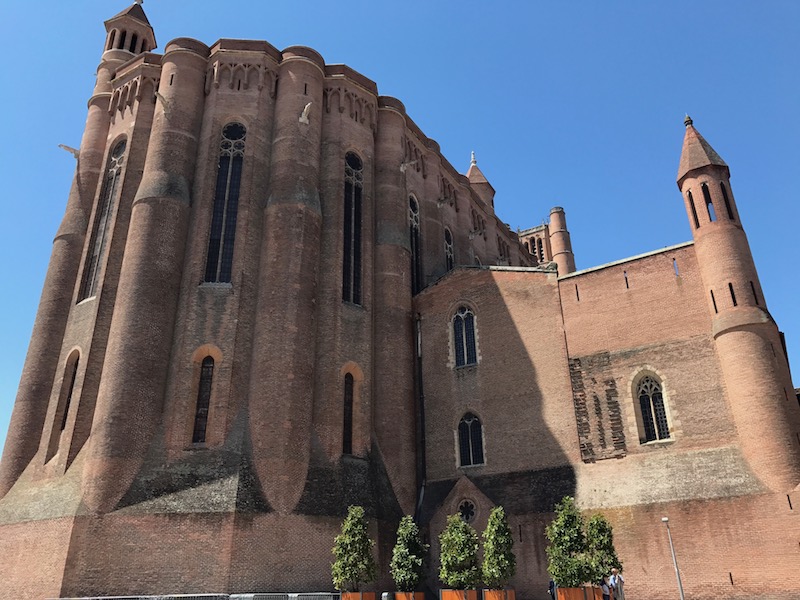
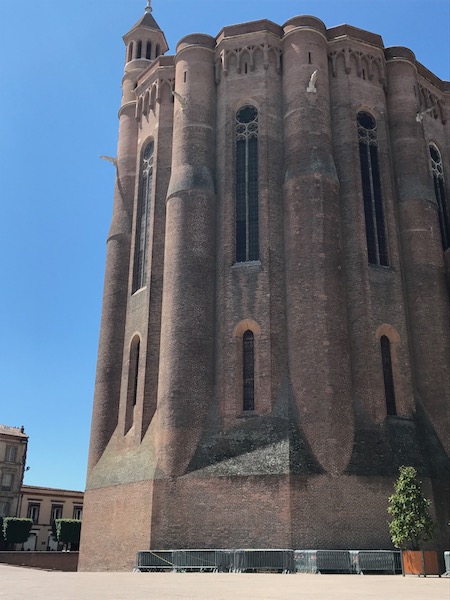
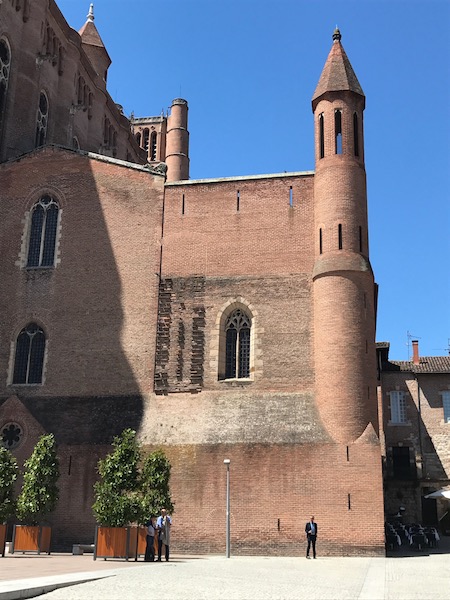
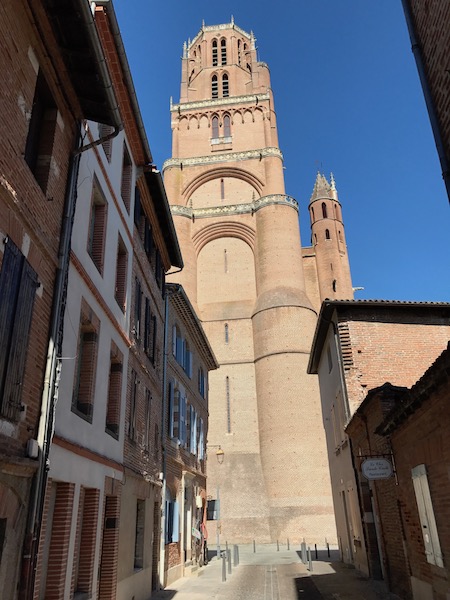
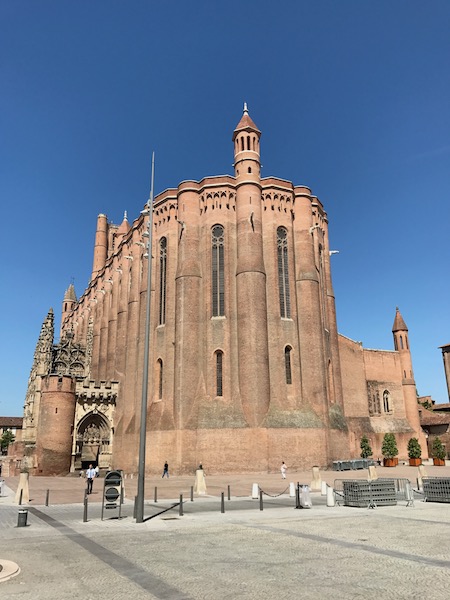

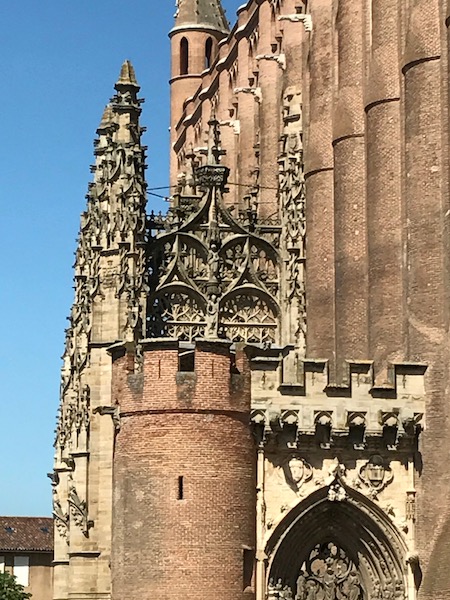
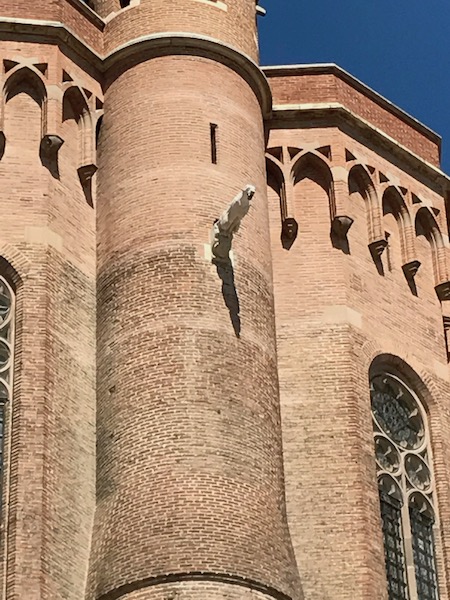
You enter from the South, which is not normal for European cathedrals. And this entrance really does look out of place with the rest of the exterior. It is an amazingly elaborate carved stone porch. This was added by Bishop Dominique de Florence (1394-1410), with an ornate, Flamboyant Gothic baldaquin over the door itself, which dates from the 16th century. You can actually see 2 different phases here: The very first entryway, which is integrated in the round, brick tower, which continues the "castle-like" stop. This has a Gothic arch with a set of statues and coats of arms. This one is lovely, but then you continue in and up another set of stairs to really see the masterpiece. The highly-Flamboyant Gothic carved stone porch! Even the ceiling of the porch has these lovely carved spines. Then a turn to the right to see the baldaquin over the door, with all of the statues going up over the arch.
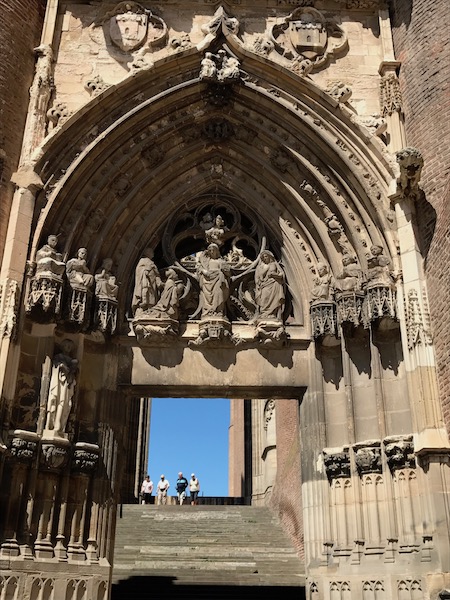
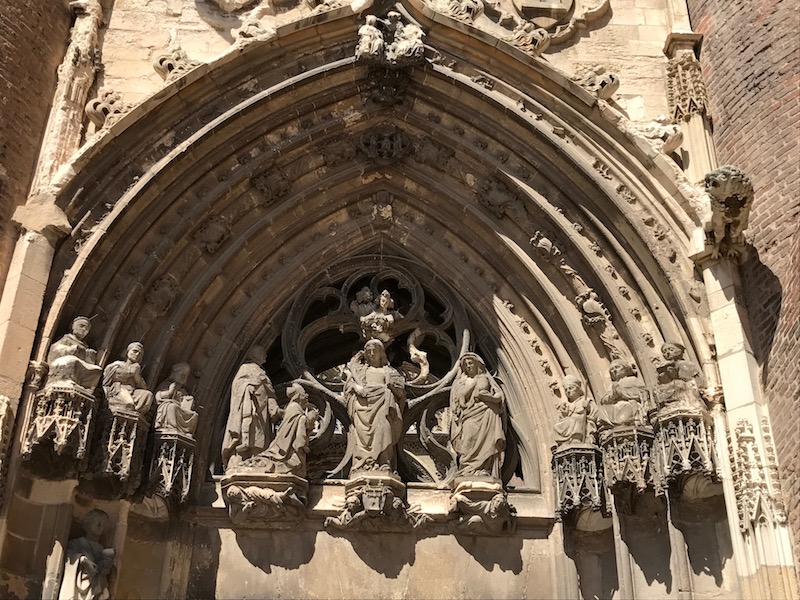
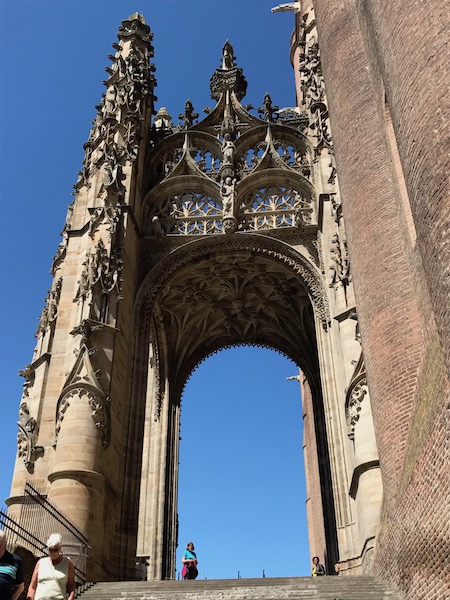
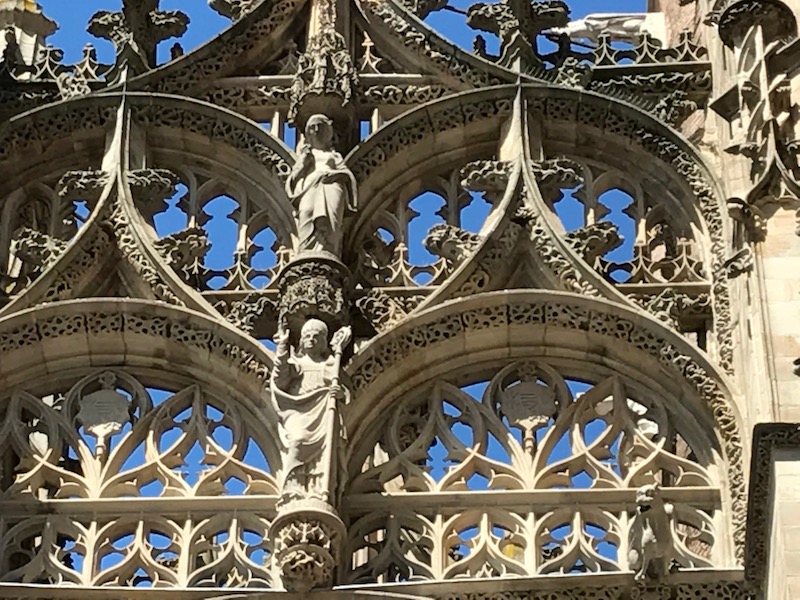
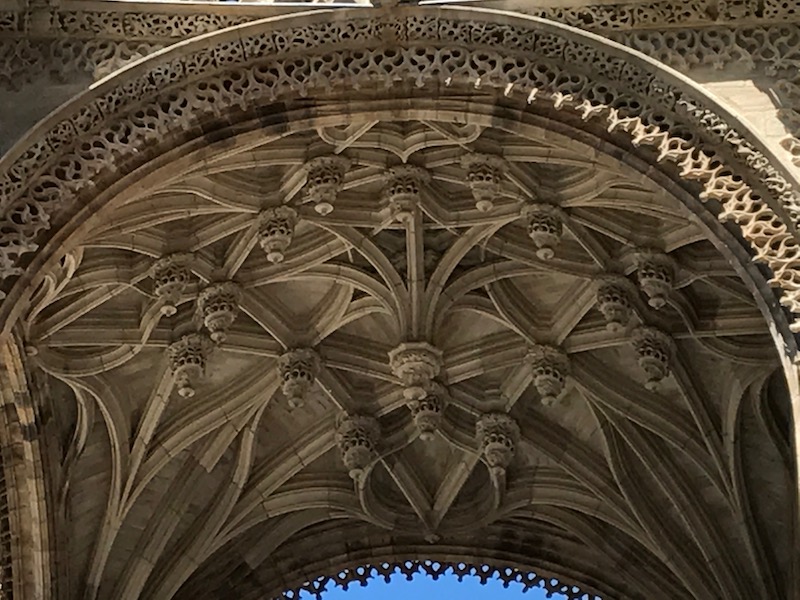


I wasn't quite ready for the interior, after the fairly plain interior of the Saint-Salvi church. This one ... well ... it is impressive. It was full of color from floor to ceiling. Every alcove, every side chapel, every part of the ceiling, is painted.

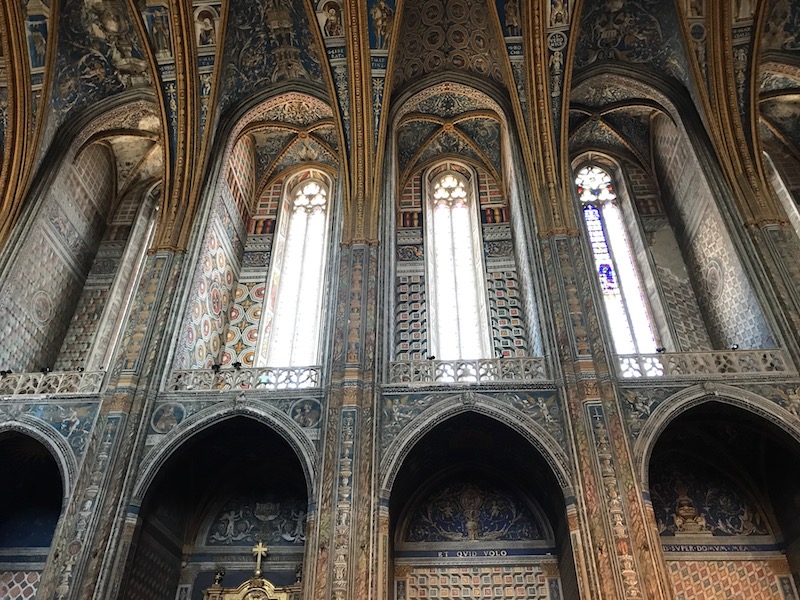
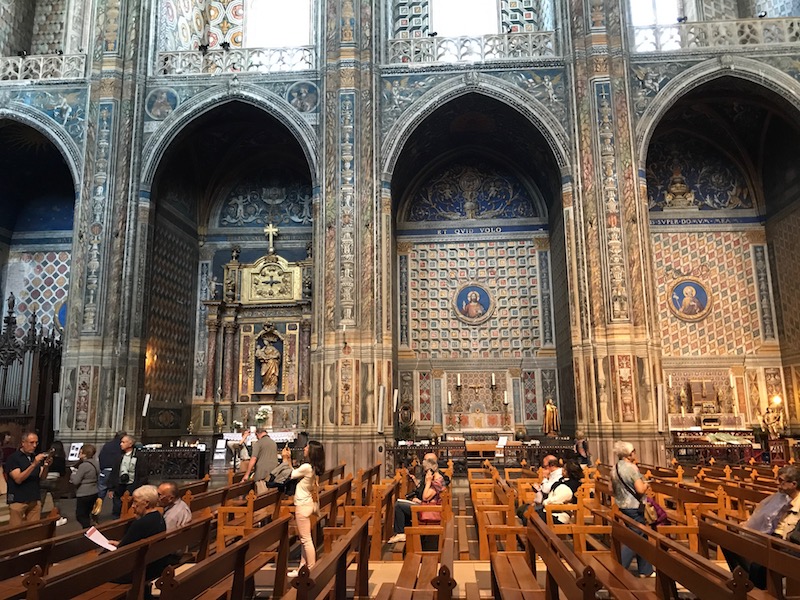
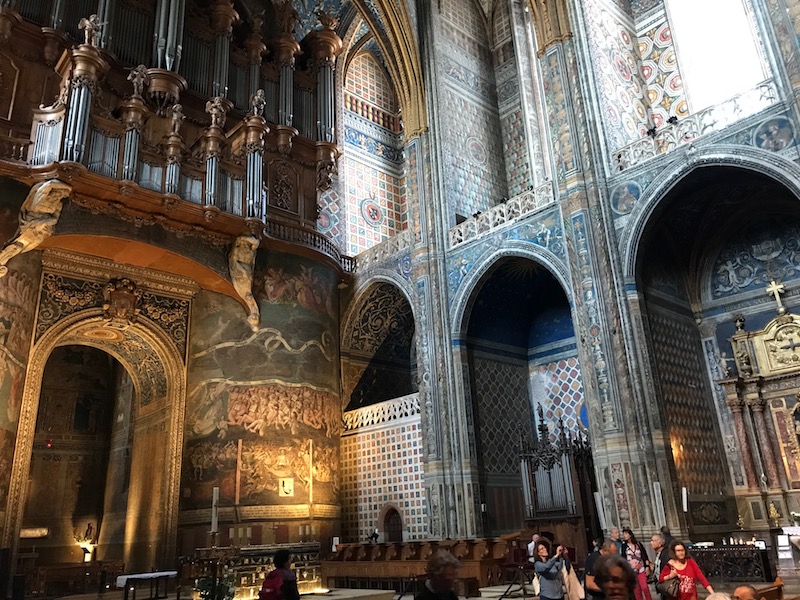

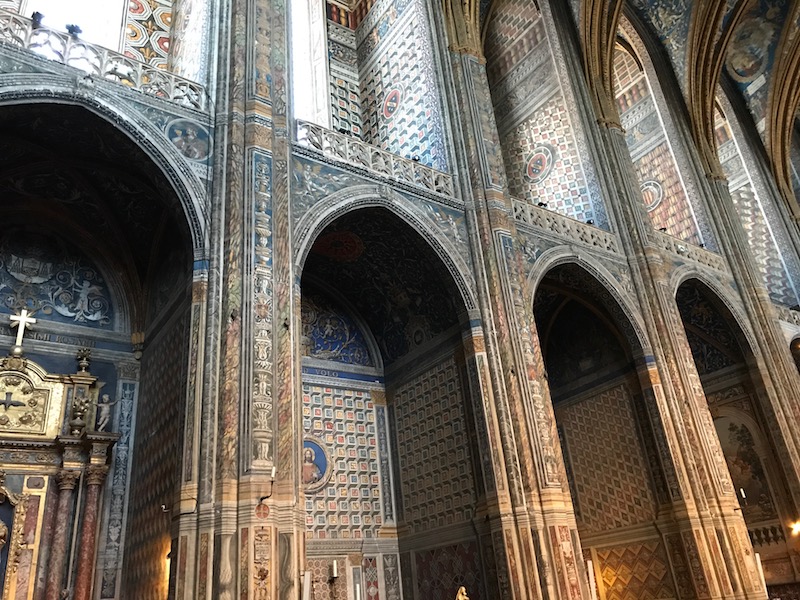
The cathedral organ, the work of Christophe Moucherel, dates from the 18th century.
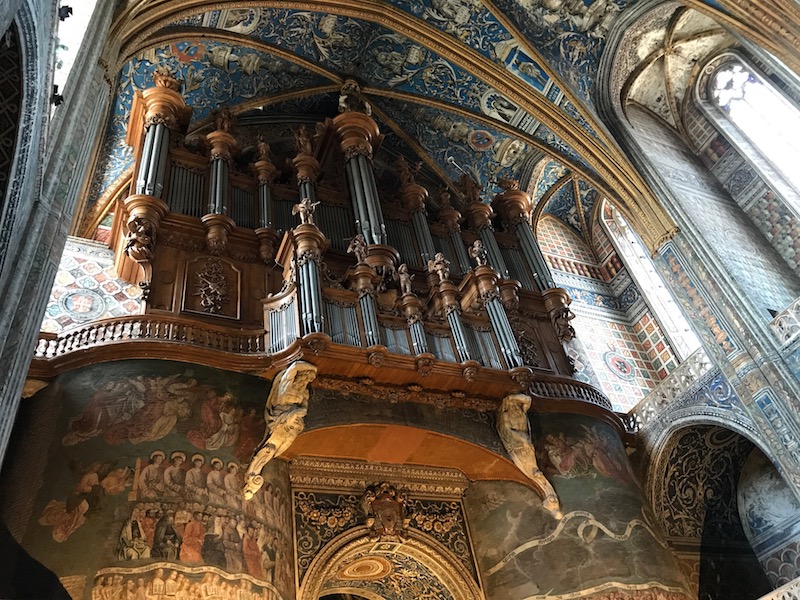

The enormous vaulted ceiling is fully covered with frescoes, which are the largest and oldest ensemble of Italian Renaissance painting in France. Commissioned by Louis II d'Amboise and dating from 1509 to 1512, the work was carried out by a team of Italian painters from Modena and Bologna. Set against a background of deep blue sky, the frescoes depict various designs, pastoral scenes, and major characters and events from the Old and New Testaments. Two sections are dedicated to St. Cecilia, patroness of the cathedral. In the audio-guide, they talked a lot about the various sections and indicated that the individuals from the New Testament were those that were more "in color" from their clothing, while those from the Old Testament were in grey robes.

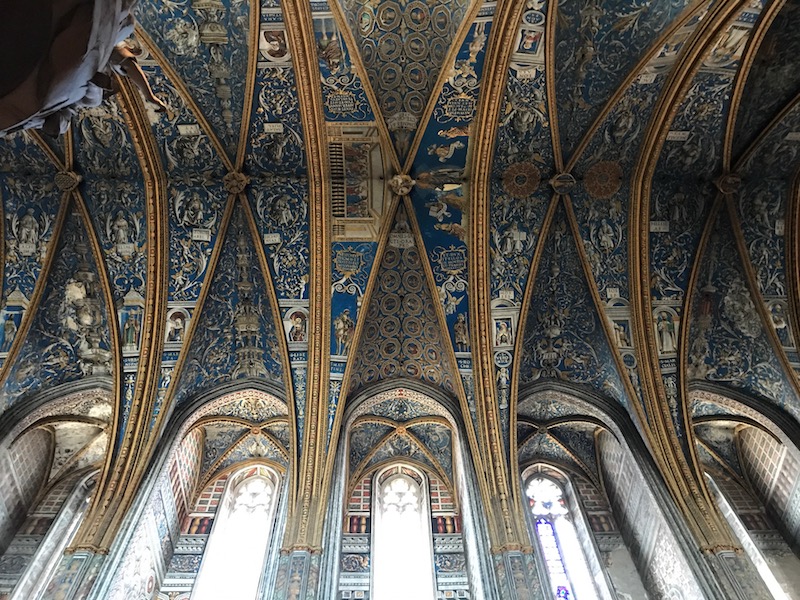
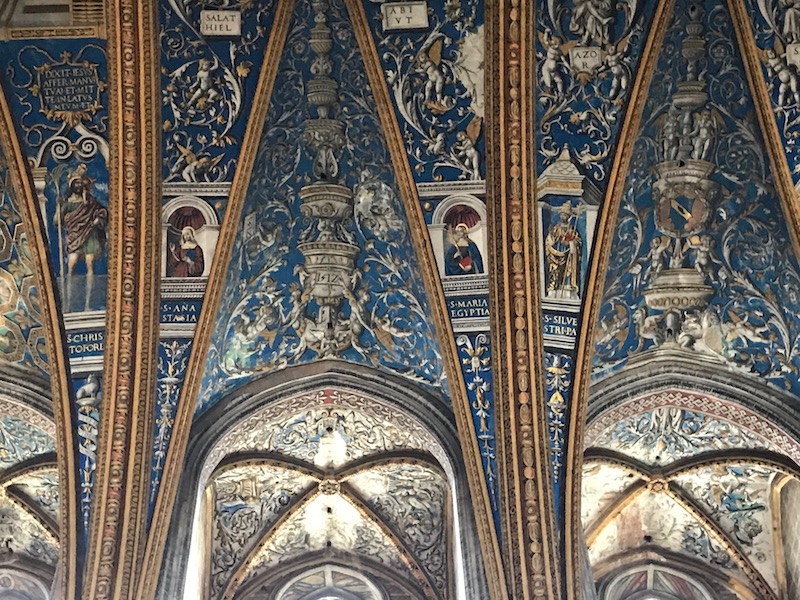

The pulpit inside Albi Cathedral, which was sculpted in 1776 by two Italian artists, Mazetti and Maderno.
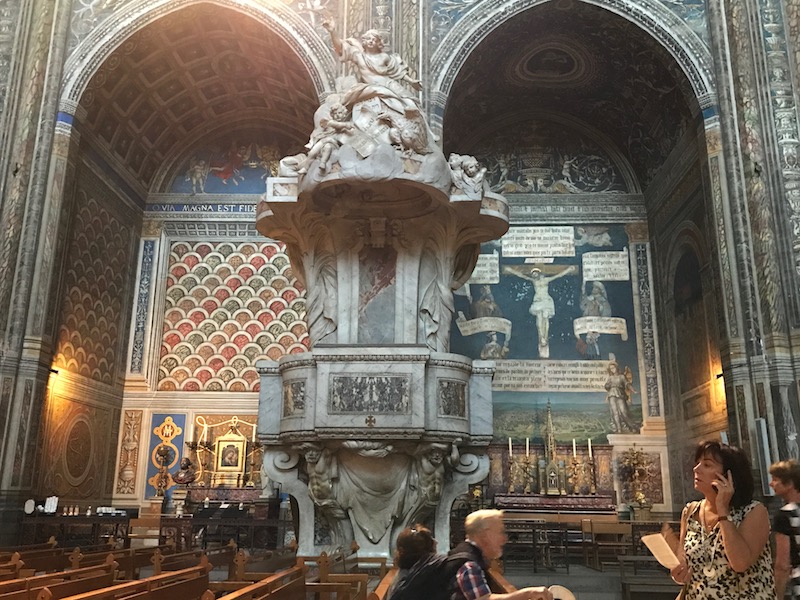
Below the organ is a huge fresco of the Last Judgement. It originally covered nearly 200 square meters but a part of it was lost when part of the wall was removed to open up the back part of the church. The scene is divided both vertically and horizontally: the Blessed are on the left and the Damned are on the right; Heaven is shown along the top, with the Resurrection of the Dead below, and Hell at the bottom. The depiction of hell has a variety of monstrous demons and suffering humans, organized around the theme of the Seven Deadly Sins. Labeled in Old French, they depict (from left to right): Pride, Envy, Wrath, Greed, Gluttony and Lust. Unfortunately, due to the removal of the middle part of the mural, we are missing Sloth within the deadly sins, as well as not having any depiction of Christ, who most likely would have been in the middle of heaven.
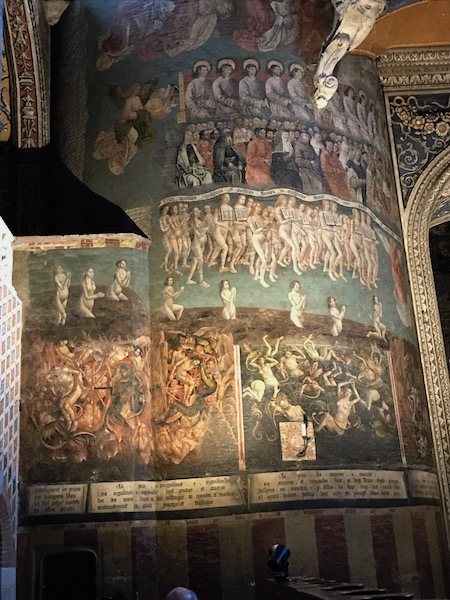
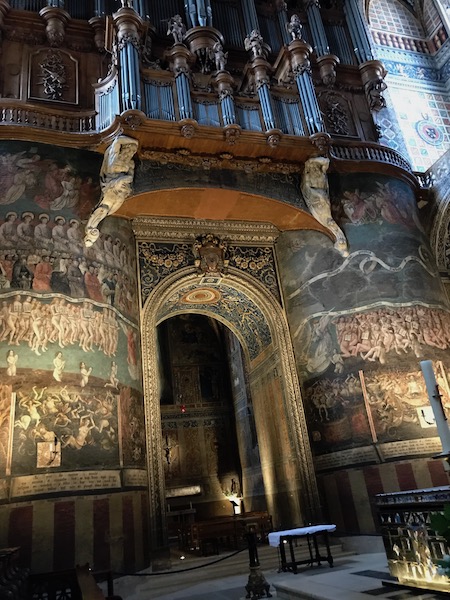
This is the "new" altar, which is very modern, which makes it stand out a bit from the rest of the church. In general, churches were built so that the entrance is in the west (which this one is not, as noted earlier) and the altar is in the east. This altar is in the West, since it was added and they wanted to keep the rood screen intact instead of removing it. This picture also shows a good view of both sides of the mural.

There are basically two parts to this cathedral: the general area that you just saw which is historically where the general population stayed during the services, and the central choir, which was reserved for members of the religious order. As you come in through the door on the south, you enter right as this separation point, where the general population would then go to the left, in the area that you've just seen, and the members of the religious order would go to the right. The two are separated by a rood screen or choir screen. They are very common in late medieval church architecture, and they tend to be very ornate in nature. This one is no exception. The rood screen itself is highly decorated in a flamboyant Gothic style. The audio-guide talked about how this is carved from various pieces of stone and then put together with such meticulous attention to detail that you can almost never find the seams between the two pieces of stone. During the Counter-reformation in the late 1500's, many of them were taken down to remove the visual barriers between the public and the high altar, which many believed to be inconsistent with the decrees of the Council of Trent. This rood screen contains a group of polychrome statues although originally, there were a lot more statues, many of which were lost during the French Revolution.
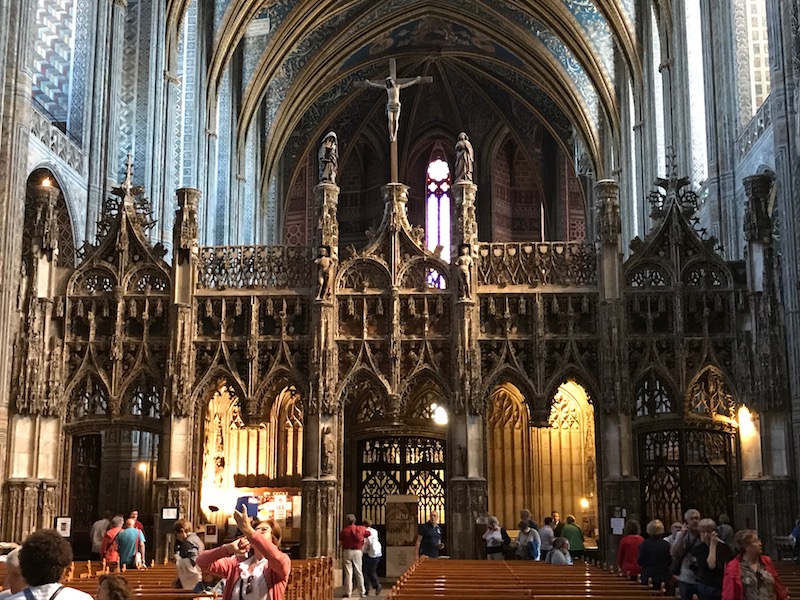
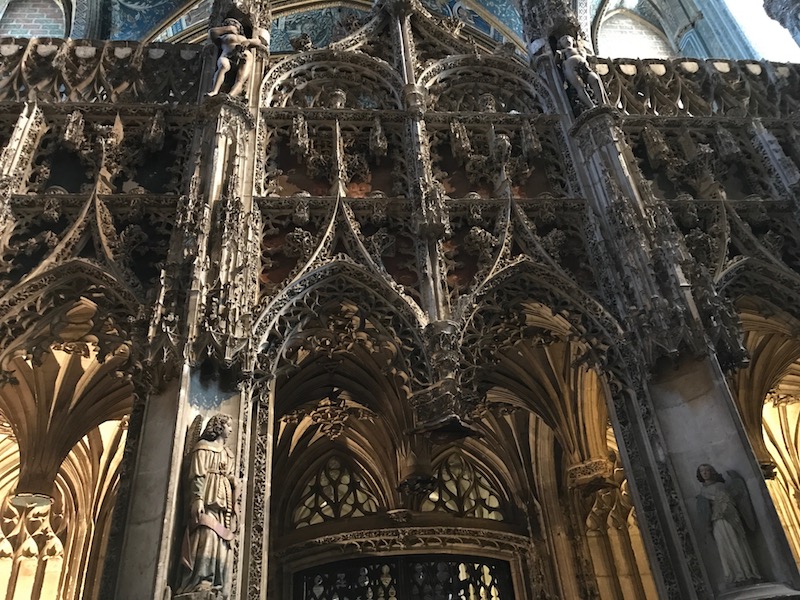
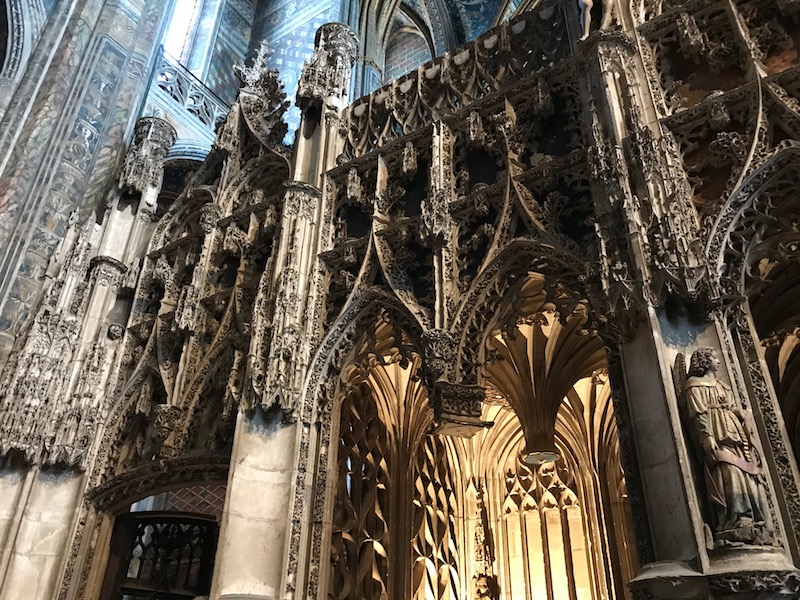
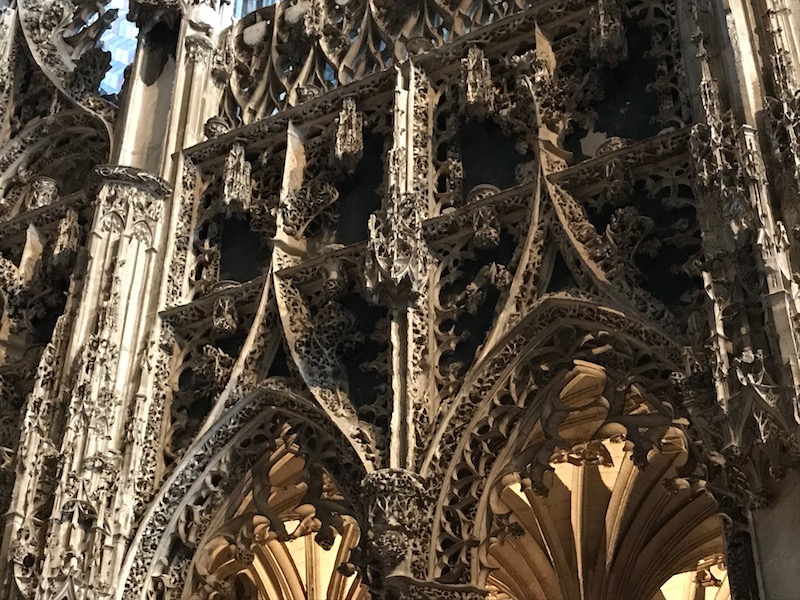
If you were part of the religious order, you would go through the rood screen to the Choir. Here you can continue to see the stonework with lots of statues. In the audio-guide, the talked about how within the decorations, there was an intermixing of the French fleur-de-lys symbol and the symbols of the Church, trying to to establish an association between the monarchy and the Church.
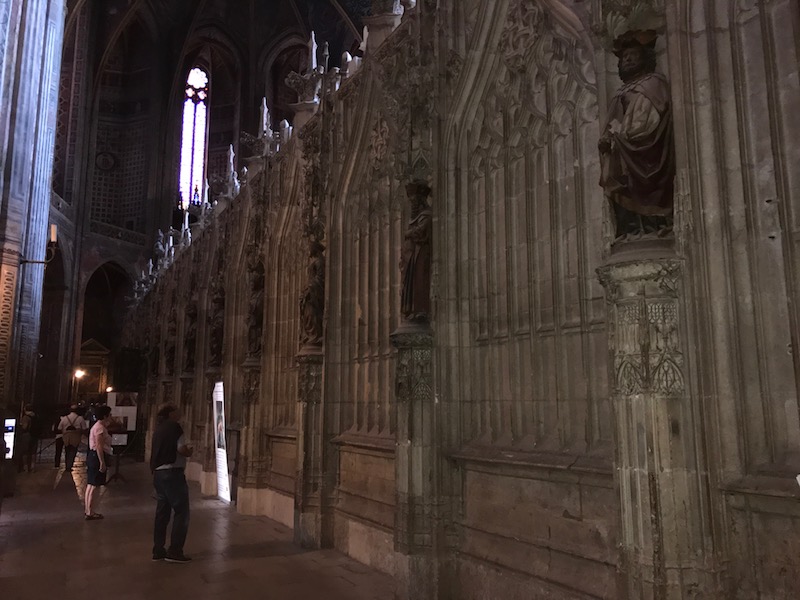
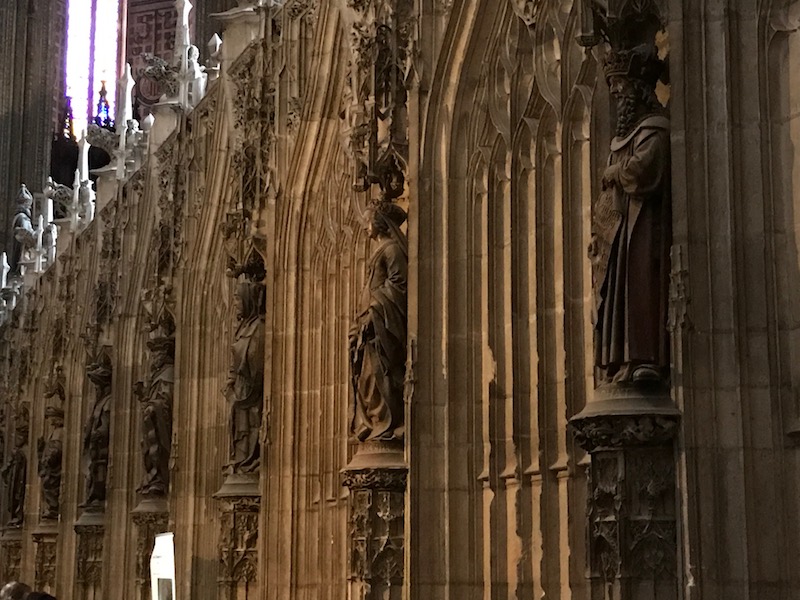
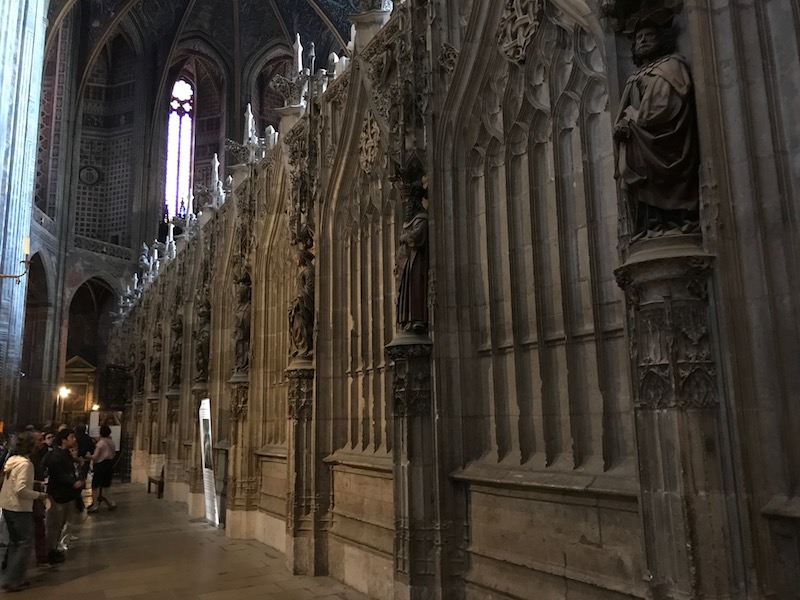
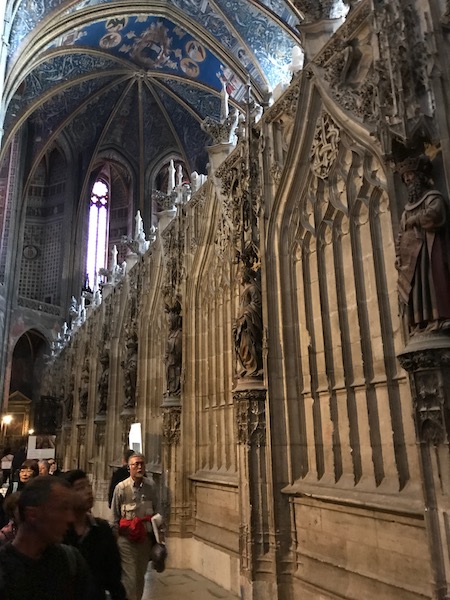

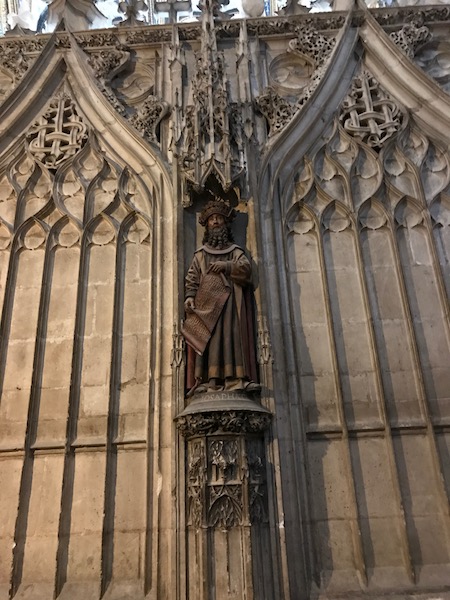
The exterior of the choir screen, similar to the outside of the cathedral, is a bit more "bland" than the interior of the choir screen. Once you go inside, into the older Chapel, you are hit with more grandeur. All around are skillfully-carved and painted statues. Dating from around 1480, these consist of 33 Old Testament figures, 15 New Testament figures (Twelve Apostles plus the Virgin, John the Baptist and St. Paul), 70 angels and two emperors (Constantine and Charlemagne over the north and south entrances). Each figure is carefully sculpted with an attention to detail in both their expression and appearance.

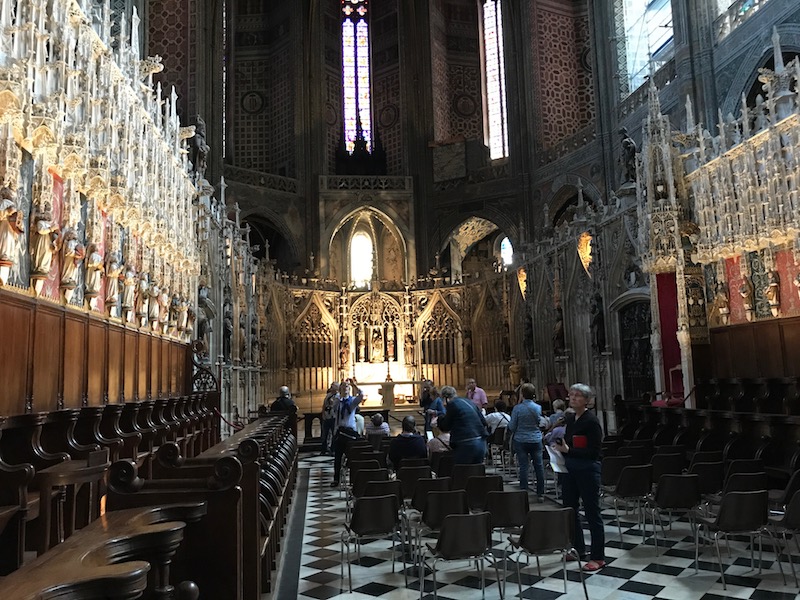
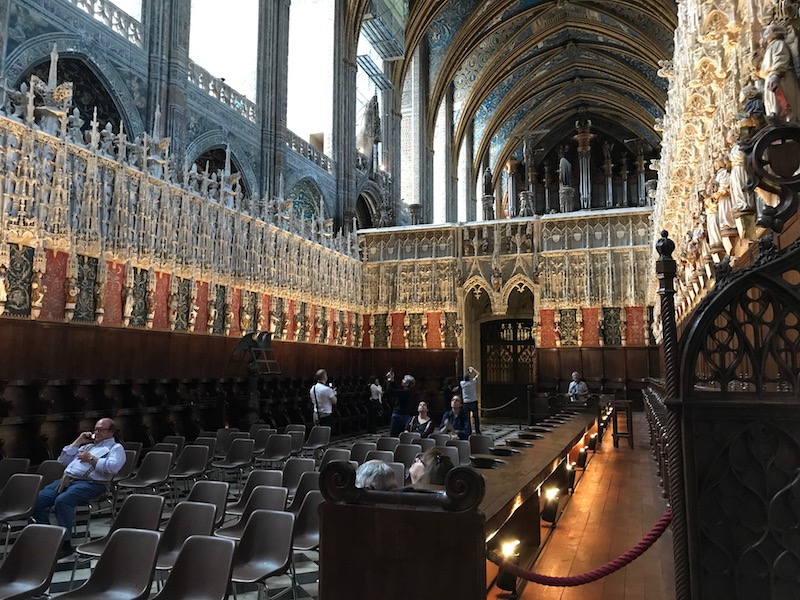
The original High Altar is still there, which is really nice.
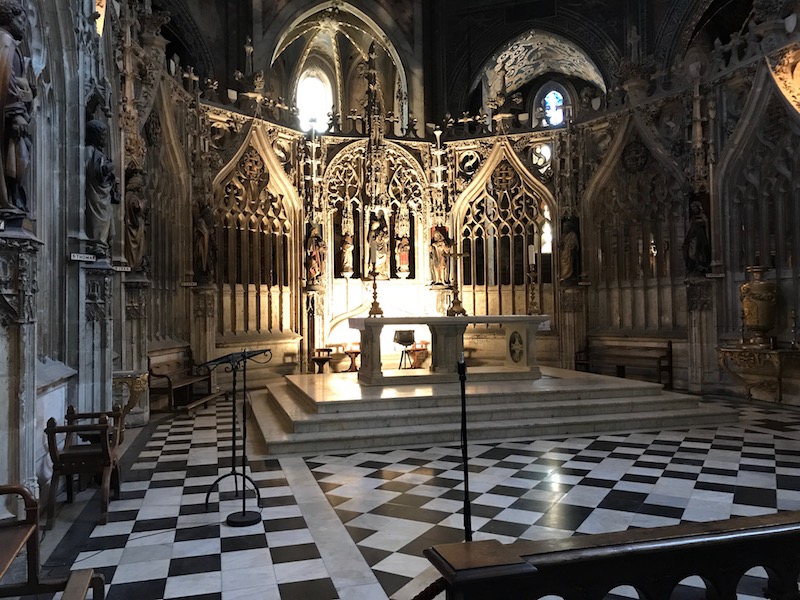
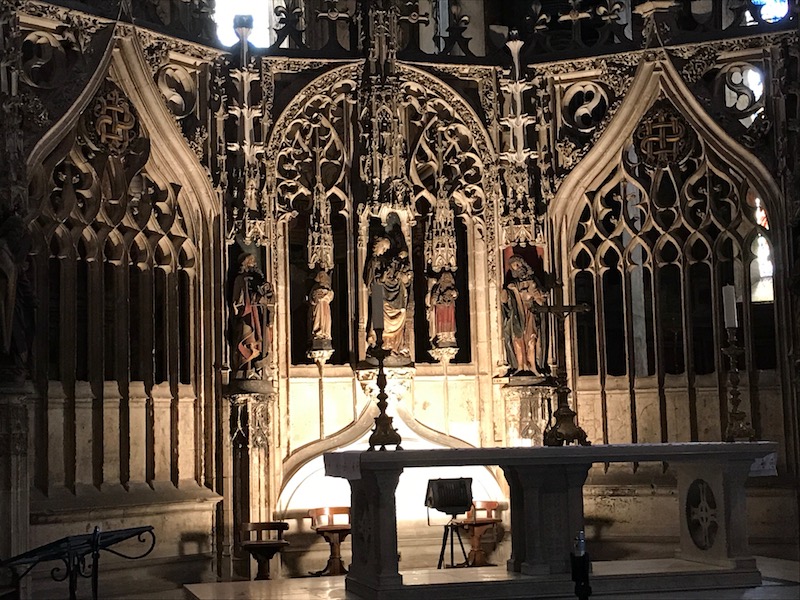
The iconography of the choir represents Old Testament prophets on the side of the ambulatory and statues of Apostles at the interior of the choir, followed by a procession of angels and the coat of arms of the patron family. The small statues on the choir screen look really nice and colorful, and they have been undergoing some restoration work (there was a small sign up).

